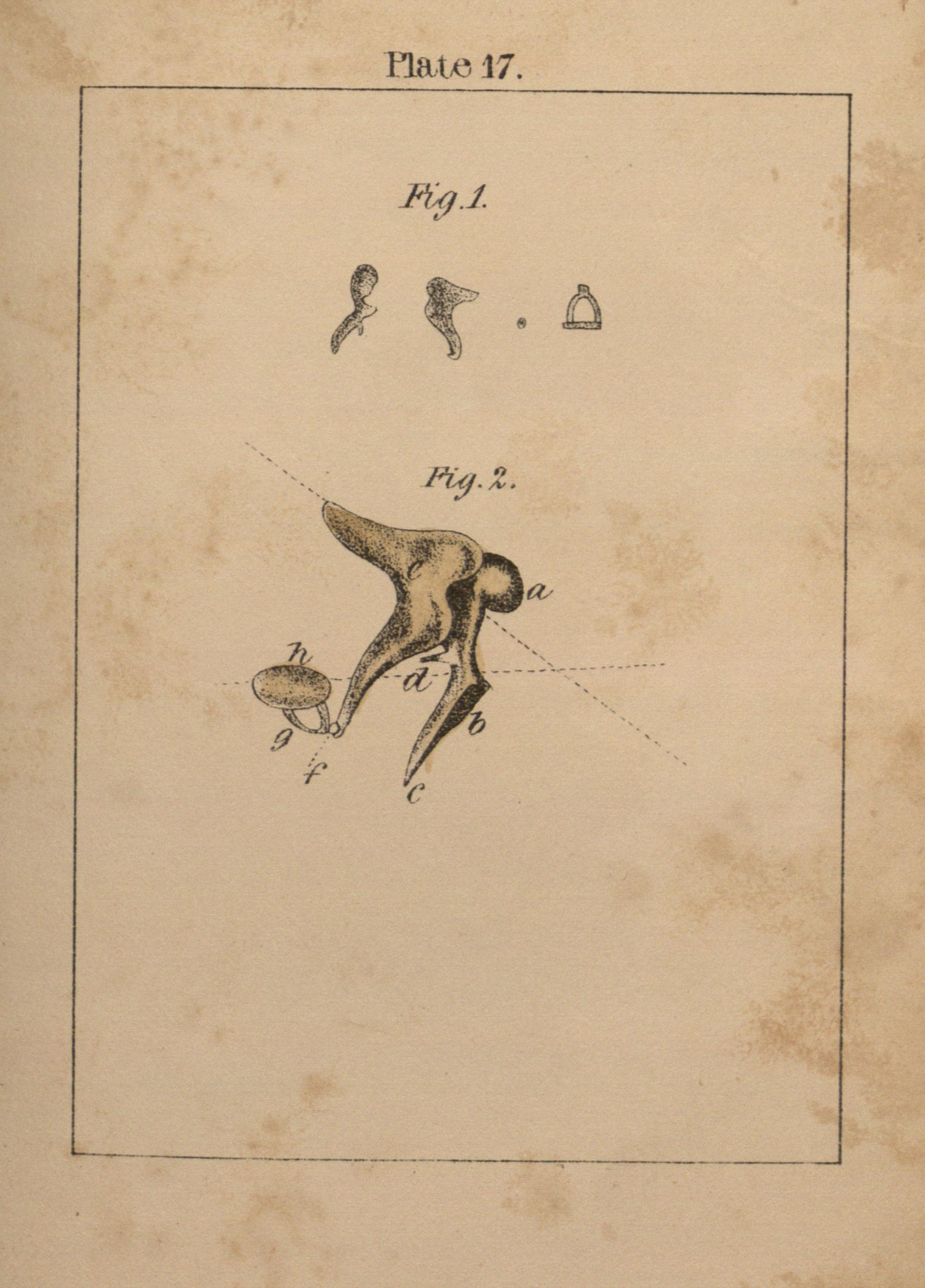The Organs of the Senses Familiarly Described, Plate 17
Created by Dave Rettenmaier on Tue, 11/24/2015 - 21:58
Description:
The natural size of these bones is shown in Fig. 1 Plate 17, (the orbicular bone being less than a mustard seed), and a magnified view,with their mode of union, in Figure 2. In the latter figure, a, is the hammer; b, its handle, c, the end attached to the membrane of the tympanum, d, the long process, e, the anvil, f, the orbicular bone, g, the head of the stirrup, and h, its base attached to the membrane of the oval hole.Another helpful text, from Chambers's Edinburgh Journal, is given below, demonstrating what was known about the ear at the time:
The impressions received from the air by the outer membrane of the cavity, are conveyed by a set of small bones to the inner, or opposite, membrane, which is called the membrane of the fendstra ovalis, or oval window, from its covering a hole in the bone leading into the deeper seated parts of the ear… the chain of bones, which convey vibrations from one side of the cavity to the other, amounts to three in number. These are all small, and the least of them is no larger than a millet-seed. ("The Ear" 411)
The natural size of these bones is shown in Fig. 1 Plate 17, (the orbicular bone being less than a mustard seed), and a magnified view,with their mode of union, in Figure 2. In the latter figure, a, is the hammer; b, its handle, c, the end attached to the membrane of the tympanum, d, the long process, e, the anvil, f, the orbicular bone, g, the head of the stirrup, and h, its base attached to the membrane of the oval hole.Another helpful text, from Chambers's Edinburgh Journal, is given below, demonstrating what was known about the ear at the time:
The impressions received from the air by the outer membrane of the cavity, are conveyed by a set of small bones to the inner, or opposite, membrane, which is called the membrane of the fendstra ovalis, or oval window, from its covering a hole in the bone leading into the deeper seated parts of the ear… the chain of bones, which convey vibrations from one side of the cavity to the other, amounts to three in number. These are all small, and the least of them is no larger than a millet-seed. ("The Ear" 411)
Copyright:
©


